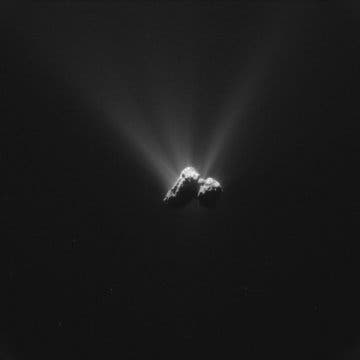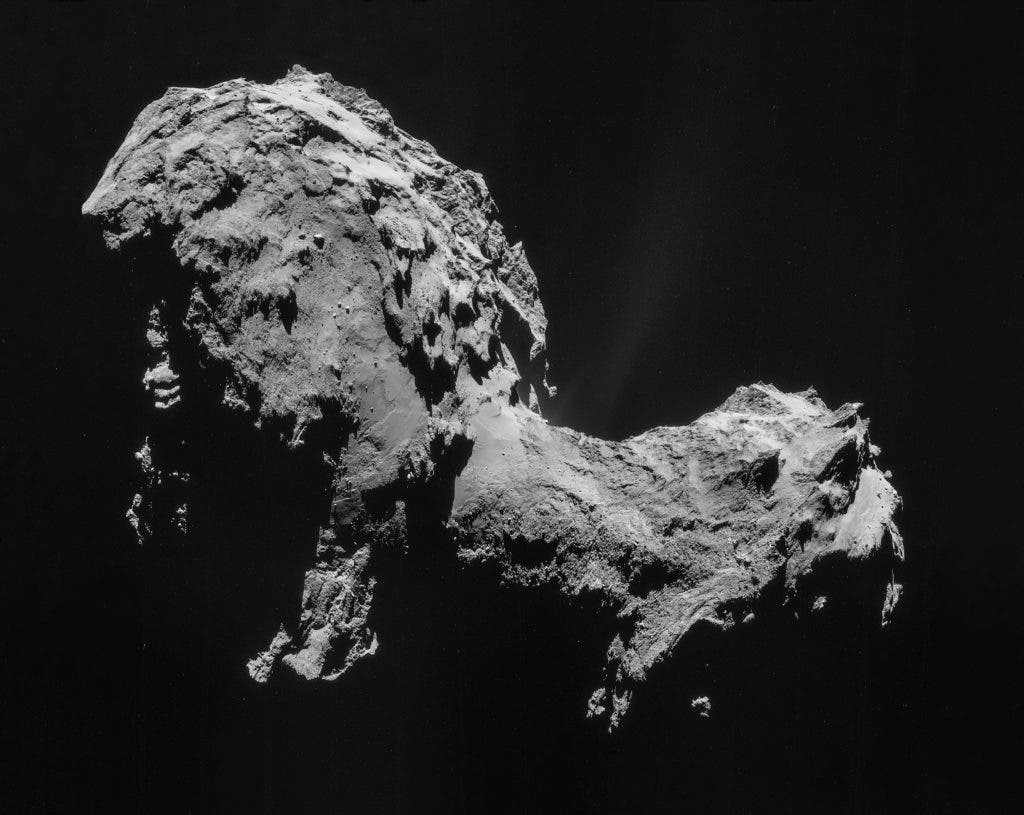Astronomers working on the Rosetta mission have discovered the key ingredients for life on the comet 67P/Churyumov-Gerasimenko, including the simple amino acid glycine and phosphorus, key components of DNA and cell membranes.

Rosetta’s comet in August 2015, when it was closest to the sun and when most of the glycine was detected.
Credit: ESA
In 2014, Rosetta’s Philae probe landed on a comet — a monumental achievement in space exploration — documenting the inner workings, chemical composition and structure of these fascinating cosmic bodies. Among others, we now know the 67P/Churyumov–Gerasimenko comet has sinkholes or holds primordial oxygen. Now, researchers have answered one of the main questions of the mission: the ingredients of life can be indeed found on the comet.
Understanding comets and their potential to seed water and/or life on Earth was crucial. Rosetta had already shown that the comets’ contribution to Earth’s water couldn’t have been massive, but the other question still remained: did comets seed Earth with the necessary ingredients for life?
While over 140 molecules had already been identified in the interstellar medium, amino acids could not be traced. Rosetta’s ROSINA instrument did show a significant difference in composition between Comet 67P/C-G’s water and that of Earth, and now, it also found hints of glycine – the smallest of the 20 amino acids commonly found in proteins, and the smallest possible aminoacid.
“This is the first unambiguous detection of glycine in the thin atmosphere of a comet,” says Kathrin Altwegg, principal investigator of the ROSINA instrument at the Center of Space and Habitability of the University of Bern and lead author of the study. The results are now being published in Science.
“We see a strong correlation of glycine to dust, suggesting that it is probably released from the grains’ icy mantles once they have warmed up in the coma, perhaps together with other volatiles,” says Altwegg.
They also found hints of the organic molecules methylamine and ethylamine, which are precursors to forming glycine. The process of transforming methylamine and ethylamine to glycine can also take place without liquid water.
“The simultaneous presence of methylamine and ethylamine, and the correlation between dust and glycine, also hints at how the glycine was formed,” says Altwegg.
Another exciting announcement is that ROSINA also detected phosphorous – a key element of life, found in the structural framework of DNA and RNA.
The multitude of organic molecules already identified by ROSINA, now joined by the exciting confirmation of fundamental ingredients like glycine and phosphorus, confirms our idea that comets have the potential to deliver key molecules for prebiotic chemistry,” says Matt Taylor, Rosetta project scientist of the European Space Agency ESA. “Demonstrating that comets are reservoirs of primitive material in the Solar System, and vessels that could have transported these vital ingredients to Earth, is one of the key goals of the Rosetta mission, and we are delighted with this result.”
But in order to truly understand how comet chemistry works, we need an actual sample here. We need to go to a comet and bring back a sample to Earth to study it in a lab. Until this is done, these are all exciting and tantalizing results, but we can’t really draw clear conclusions.
Journal Reference: Prebiotic chemicals – amino acid and phosphorus – in the coma of comet 67P/Churyumov-Gerasimenko. Science Advances, 27 May 2016 DOI: 10.1126/sciadv.1600285










